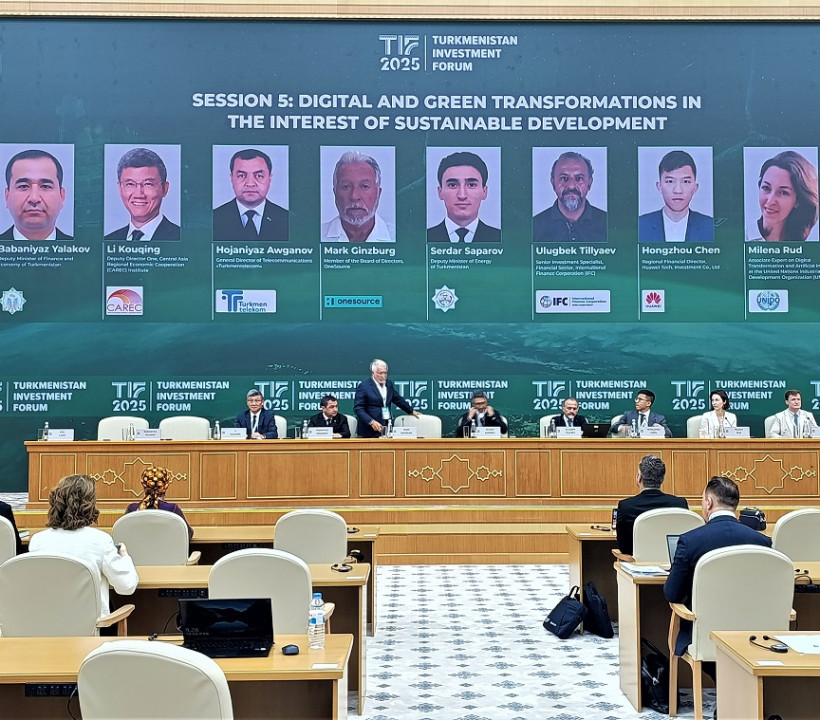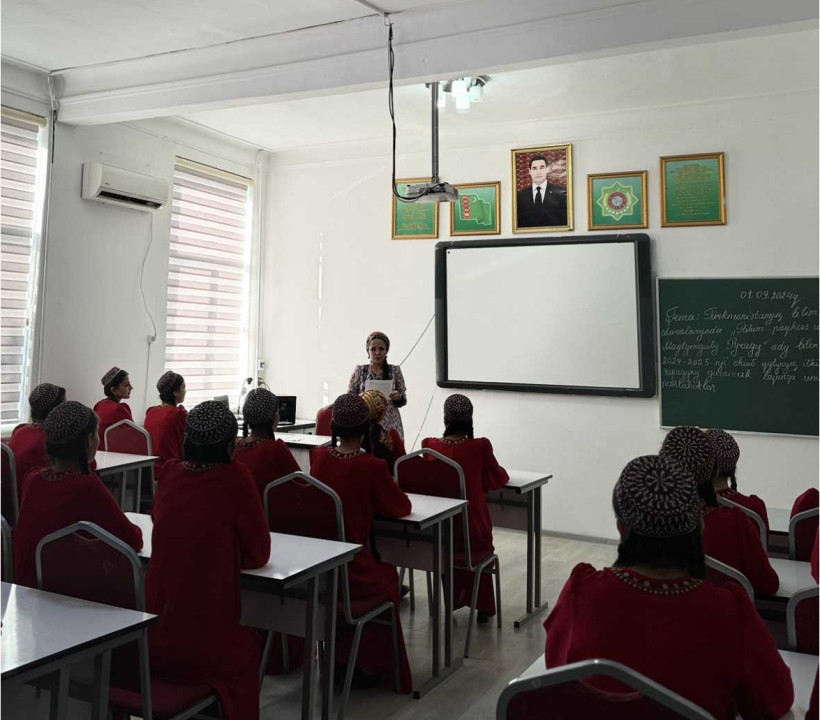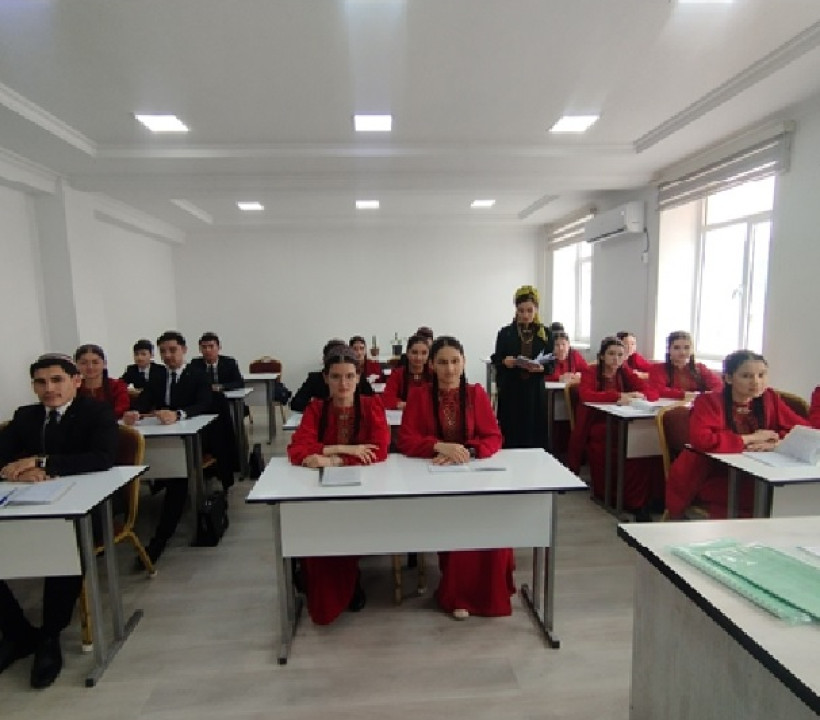The possibilities of digital education in educational work.
He said that the formation of a constructive, creative, inventive, and developed intellectual level of youth for the sake of the sustainable development of the country and the strengthening of our Motherland is an important feature of the present era. This feature is provided by the modernization of the education system, which plays a key role in its development, in accordance with world standards, along with all sectors of the economy. The introduction of digital tools into the education system of our country, the implementation of a modern educational portal, through the tireless efforts of the Honorable President, has significantly increased the potential of education workers. The basis for the development of the digital system in the country is the focus on improving the work of educational institutions, providing them with high-quality electronic information, using new technologies, and bringing the quality of education to the required level. The “Concept of Developing the Digital Education System in Turkmenistan”, approved by the Resolution of the Honorable President in 2017, is guided by the “Concept of Developing the Digital Education System in Turkmenistan”. This Concept is aimed at creating an information-educational environment in the country (along the specified lines) and providing all stages of education with high-quality electronic information, enriching and improving the content of the education provided. The main goal of the Concept for the Development of the Digital Education System in Turkmenistan is to provide high-quality electronic information for teaching programs at all stages of education in accordance with the innovative development of the country and to improve the education system through distance learning. The Concept will contribute to the further comprehensive development of our dear Motherland, business and investment activity, the introduction of advanced methods of public administration, the creation of new jobs, and the continuous improvement of the welfare of our people. The main tasks envisaged in the Concept are: - development of the regulatory and legal framework of the digital education system; - development of the technological system of educational institutions and increasing the provision of digital knowledge resources for students and teaching staff at all stages of the education system; - ensuring access to high-quality knowledge resources and services and the use of digital educational resources, including electronic textbooks and manuals, in the process of education; - use of distance education technologies; - improving the quality of education through the development of information and telecommunication technologies; - training employees in the electronic education system. The development of students' motivation to acquire knowledge and continuous independent learning through the use of modern information and communication technologies. Modern society has become an information society in recent decades and is rapidly becoming more dynamic. This means that access to information and services is provided to users on a permanent basis, regardless of where and when they are. To ensure such mobility, new types of computer equipment (smartphones, tablets, etc.), as well as new technologies for working with databases and services (“cloud” technologies) have appeared. Electronic educational databases and services should be available to a schoolchild and student both in educational institutions, at home, and on the go. This also applies to other participants in educational work - parents, teachers, and heads of various levels of the education system. The mobility of each participant in the educational environment will form the basis of digital education in the new information society. The equipment of new, modern educational institutions built and put into operation in all regions of the country with advanced innovative technologies also indicates the implementation of a digital education system. The launch of the portal project “Digital Education System” in educational institutions of the country, lessons held via videoconference in educational institutions, and online competitions are of great importance in improving the quality of education, improving teaching methods, and using best practices.
As is known, currently the "Concept of developing the digital education system in Turkmenistan" is being successfully implemented in our country. This Concept defines the goals, tasks and main directions of developing the digital education system in the country. According to the measures planned in the first stage of implementing the Concept, due to the widespread introduction of digital technologies and high-speed Internet in educational institutions, training seminars are regularly held via videoconference between secondary vocational and higher educational institutions of the country.
Nowadays, it is impossible to imagine our life without computers and mobile communications. In the development of the digital education system, it is of great importance to provide our country's educational institutions with advanced innovative technologies and to continuously improve the computer literacy of teachers. The Department of Special Education is working on the implementation of the Concept of the Digital Education System in secondary schools of Gubadag etrap. The work on replenishing the electronic information base with new information is constantly being continued, and an electronic version of school curricula is being created. Seminars are regularly held to create opportunities for teachers to exchange experience. In our beloved Motherland, great work is also being carried out at a high pace to develop the digital economy. The development of the digital economy and the transition to the electronic system require, first of all, the further improvement of the education system. The successful implementation of these tasks will have a positive impact on increasing the economic potential of our country and further improving the welfare of the population. Thanks to the high achievements of the education system in the new era of the Revival of the state, the work of educational institutions is gaining new momentum. With the introduction of digital tools and innovative technologies into the education system, the education and upbringing of the younger generation in children's institutions and secondary schools is also being deepened. The vast possibilities of the digital system play a very important role in the modern organization of classes and creative work of educators and teachers. The quality of education based on innovative technologies has reached a high level, and the younger generation has increased its skills in using computer technologies since childhood. Thanks to the creation and increasingly widespread use of e-books, they have the opportunity to study independently anywhere, at any time. This gives a powerful impetus to the development of the younger generation in accordance with the requirements of the times, to become mature individuals with a broad worldview.
May the lives of our Hero Arkadag, our Hero Serdar of Arkadag, who consistently develops the digital education system and inspires young people to achieve lofty goals, always be healthy, and may his work of national benefit, national importance, and world-class example always be successful!
Teacher G. Annaliyeva





